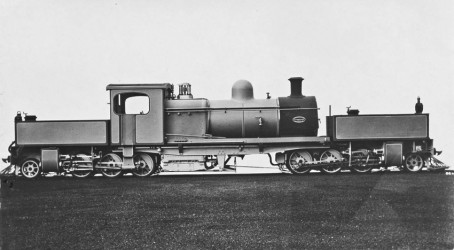Articles
Railway companies in places as diverse as Boma on the Congo River and Cóndor on the Rio Mulatos-Potosí line in Bolivia have used the Garratt articulated locomotive, which is flexible and can travel around tight curves. The locomotive is named after its inventor, Herbert William Garratt.
Garratt was born in 1864. He served an apprenticeship at the North London Railway’s Bow works from 1879 to 1882. He then moved to William Doxford and Son’s marine engineering works in Sunderland, where he later became an inspector for Sir Charles Fox and Sir Alexander Rendel.
Then came a period overseas. In 1889, Garratt transferred to the Argentine Central Railway, where he became locomotive superintendent in 1892. Between 1900 and 1906, he worked for railways in Cuba, Lagos and Peru.
Garratt, who was a member of both the IMechE and the Institution of Locomotive Engineers, returned to the UK in 1906. He was inspecting articulated vehicles for heavy artillery when it occurred to him that locomotives could be built in the same way. By 1907, he had developed the idea enough to apply for, and be granted, a patent.
The locomotives are made up of three separate frames: the boiler frame, which carries the boiler and cab, is pivoted between two steam engines mounted on separate frames. Both power units carry water tanks, while the rear power unit also carries the fuel supply.
Garratt lacked the financial means to develop his idea, so he had to tout it around locomotive works. Nobody was interested until he had the luck to be at Beyer, Peacock and Company when it received an enquiry for a locomotive to run on the North East Dundas Tramway in Tasmania. This line already had a semi-articulated locomotive, a Hagans 2-6-4-0T. But Garratt’s concept interested the company, and his untried design was submitted to Tasmania.
An order subsequently arrived from Australia, and the drawing office had to produce a design for production. These first two Garratts (class K1) had their cylinders on the inner ends of the bogies, with compound expansion and the low-pressure cylinders being on the leading units. A Garratt K1 locomotive is preserved by the Welsh Highland Railway Society (see www.whrsoc.org.uk).
Soon afterwards, an engine order was received for the Darjeeling Himalaya Railway. This line had 2ft-gauge track. Now a prototype Garratt was produced, with simple expansion cylinders positioned on the outer ends of the power bogies.
Garratt locomotives can carry much larger boiler units than conventional engines. They are also more flexible and can travel around tighter curves. For these reasons, they have been used on railways throughout the world, particularly on narrow-gauge track. However, they do have a disadvantage: the adhesive weight decreases as the water is used from the front tank and coal from the rear bunker. As the weight on the wheels decreases, slipping can occur.
As well as producing the locomotives, Beyer, Peacock developed and marketed the design, licensing it to other builders. After the original Garratt patents expired in 1928, Beyer, Peacock continued to market Garratts under the name Beyer-Garratt.
With continuing development and patent improvements, Beyer, Peacock maintained the Garratt concept. Just under two-thirds of all Garratt locomotives were built at the firm's Gorton foundry near Manchester. The rest were constructed by licensees, and a few by non-licensed builders. The final Garratts made to a Beyer, Peacock design were built in 1968.
Sadly, Garratt died in 1913 at the age of 49, so he did not see the international success of the locomotives that bore his name. However, in Argentina, Garratts are still being used on a heritage route – the Train of the End of the World, a service into the Tierra del Fuego National Park that is considered the southernmost functioning railway in the world.
